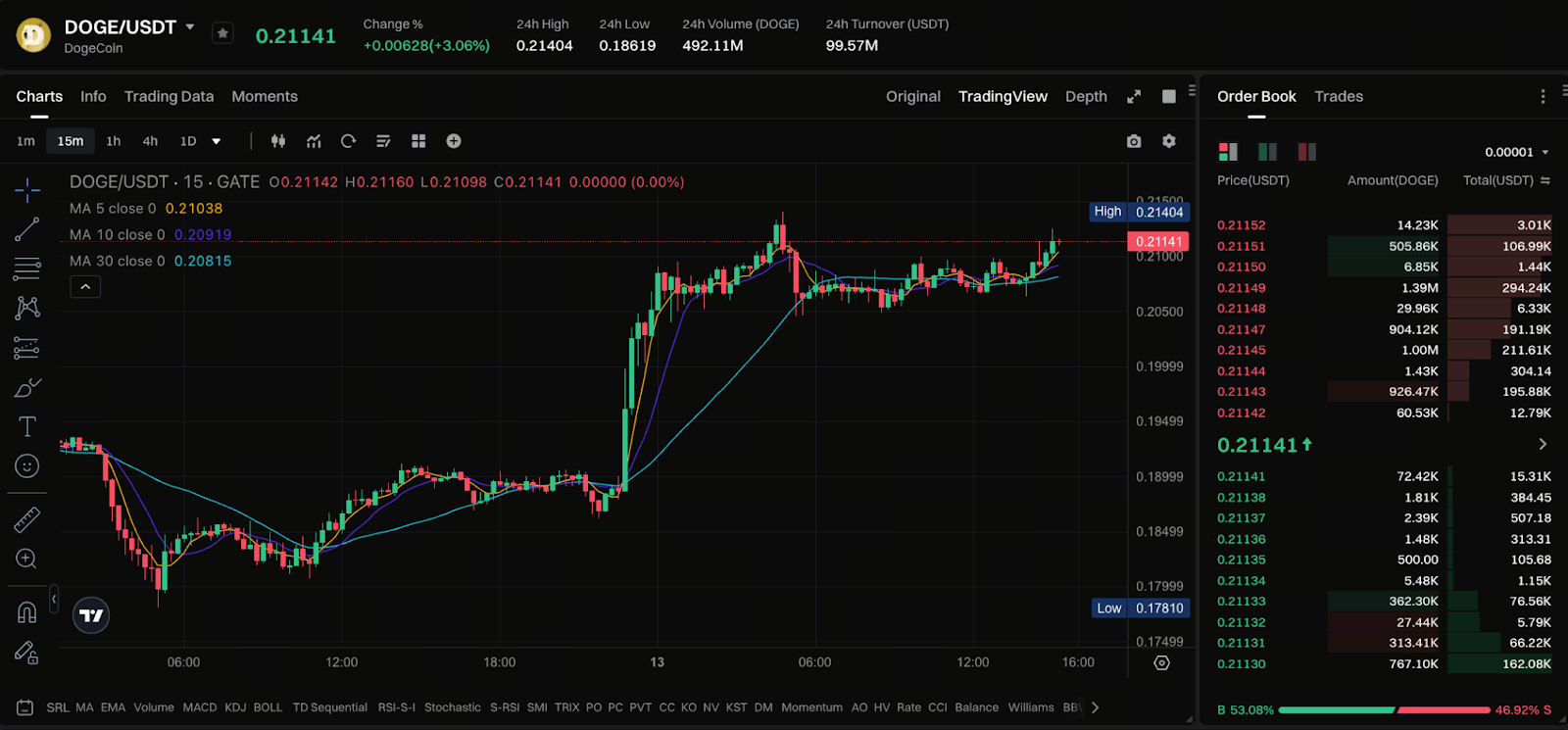Is Dogecoin About to Take Off? Traders Predict a $6.94 Target — How Likely Is It?
Dogecoin Overview and Current Status

Image: https://www.gate.com/trade/DOGE_USDT
Dogecoin (DOGE) launched in 2013 as a meme coin featuring the Shiba Inu dog. Its playful appeal and robust community propelled it to fame. However, its unlimited issuance model has drawn persistent criticism.
DOGE is trading in the $0.21 to $0.25 range. Recent market rebounds have driven up both trading volume and whale accumulation, which signals improved market sentiment. Despite this, DOGE remains a highly speculative asset, with price movements largely influenced by market mood and social media buzz.
Where Does the “$6.94 Target” Come From?
This bold forecast comes from renowned trader Kaleo, who used a model based on “Bitcoin math”: If Bitcoin hits $500,000 in this cycle and DOGE’s market cap reaches 10% of Bitcoin’s at its peak, then—given DOGE’s current circulating supply—each DOGE could theoretically be priced at $6.94.
Put simply, this is a back-calculation relying on market cap ratios and broad macro assumptions. While not entirely unfounded, it hinges on extremely bullish market conditions.
Market Resistance and Risk Factors
Technological Lag: DOGE’s technical development lags behind major blockchain platforms like Ethereum and Solana, and it lacks substantial real-world use cases.
Inflationary Model: With no hard cap on supply, DOGE’s ongoing issuance puts long-term downward pressure on price.
Whale Concentration Risk: Holdings are dominated by large wallets; any major sell-off could trigger sharp volatility.
Regulatory Uncertainty: As governments intensify crypto regulation, meme coins are increasingly coming under scrutiny.
Volatile Market Sentiment: DOGE’s price is tightly linked to social media trends, which makes it susceptible to short-term speculative swings.
How Should Investors View These Extreme Predictions?
For newcomers, such predictions are more aspirational than actionable investment benchmarks. Rational strategies include:
- See the $6.94 target as an “extreme scenario,” not a likely outcome.
- Set reasonable profit-taking and stop-loss limits to avoid emotional buying.
- Diversify holdings instead of concentrating on meme coins.
- Monitor fundamental developments like network upgrades, real-world adoption, or ETF news.
- Stay informed and cautious—understand that “to the Moon” does not guarantee returns.
Conclusion
“Dogecoin to the Moon?” is once again fueling excitement across the community, but if viewed objectively, this prediction is more wishful thinking than realistic. For disciplined investors, the real priorities should be market structure, policy shifts, and capital flows—not chasing fantasy price targets.
Related Articles

2025 BTC Price Prediction: BTC Trend Forecast Based on Technical and Macroeconomic Data

Flare Crypto Explained: What Is Flare Network and Why It Matters in 2025

Pi Coin Transaction Guide: How to Transfer to Gate.com

How to Use a Crypto Whale Tracker: Top Tool Recommendation for 2025 to Follow Whale Moves

What is N2: An AI-Driven Layer 2 Solution
